Comes with a Smile - Interview
by John Clarkson
published: 20 / 3 / 2023
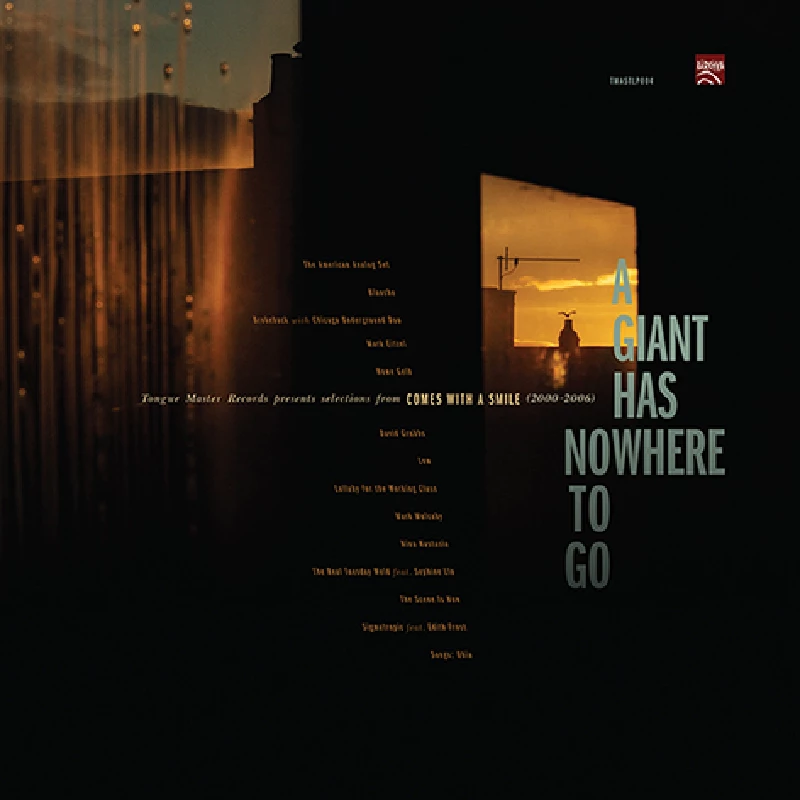
intro
John Clarkson gets deep into the hearts and minds behind one of the most influential music publications of the last 30 years, Comes with a Smile
Comes with a Smile was a print music magazine-fanzine that ran across twenty editions between 1997 and 2006. It was founded by its editor and graphic designer Matt Dornan with the help of his long-term friend, fellow designer and self-taught photographer Paul Heartfield. Printed on a gorgeous combination of not-quite-square yellow, light brown and black paper, it is fondly remembered for its in-depth interviews, strong emphasis on photography and aesthetics, and the CD that accompanied it from its fifth issue, which compiled unreleased and demo tracks from the artists and bands in each issue. Comes with a Smile did a lot to further the careers of alternative artists such as The Bad Seeds’ Mick Harvey, The Go-Betweens, Death Cab for Cutie, Stereolab, Beth Orton, Cat Power, Low, Teenage Fanclub, Sufjan Stevens, Frank Black and Elliot Smith, and it helped break then unknown artists including The American Analog Set, Mary Lorson, Mark Mulcahy, 65daysofstatic, Silver Jews, The New Pornographers, Rothko and Willard Grant Conspiracy. It also highlighted the then rising Americana movement and acts such as Mark Eitzel, Howe Gelb, Cowboy Junkies, Smog, Iron and Wine, M. Ward, Nina Nastasia and Richmond Fontaine. Despite selling 8,000 copies per edition at its peak, Comes with a Smile struggled financially throughout its history and it closed when the last in a line of backers pulled out. Theo Vlassopulos is the owner of the London-based indie label Tongue Master Records. He has had a long association with Dornan, who provided the sleeve design for Tongue Master’s first 7in in 2000 and has done so for many of its releases since. Comes with a Smile also interviewed and provided reviews for most of Tongue Master’s acts. Tongue Master is now releasing ‘A Giant Has Nowhere to Go’, a celebratory vinyl-only tribute to Comes with a Smile, which is limited to 500 copies and is drawn from the 16 cover-mounted CDs that Comes with a Smile released between 2000 and 2006. None of the 14 tracks on ‘A Giant Has Nowhere to Go’ has been released on vinyl before. The first side features artists from the Tongue Master roster, all of whom provide alternative versions of their songs or unreleased tracks. Songwriting giants Howe Gelb, Mark Mulcahy and Mark Eitzel all make an appearance. There is also angular avant-garde blues track from New York hipsters The Scene is Now, hypnotic electronica from Greek artist Sigmatropic who has collaborated on his track with singer-songwriter Edith Frost, and cinematic pop from The Real Tuesday Weld which features a scene-stealing guest vocal from Selphine Lo. The second side provides a versatile overview of some of the tracks that were on the Comes with a Smile CDs. There is literary art rock from Lullaby for the Working Class, and battling, jazz-inspired guitar rock on a joint track between Brokeback and Chicago Underground Duo. We also hear sinister Americana from Blanche, and sparser tracks from Nina Nastasia, David Grubbs and - with the haunting closing number ‘Untitled’ - the late Jason Molina under his moniker of Songs: Ohia. Vlassopulos has also added an additional 7in single as sides three and four of ‘A Giant Has Nowhere to Go’, on which The American Analog Set provide an edited version of the soaring and upbeat ‘Everything Ends in Spring’. Although it went to manufacturing long before Low singer and drummer Mimi Parker’s untimely death in November, ‘A Giant Has Nowhere to Go’ closes poignantly with an acoustic version of ‘Walk into the Sea’ from Low’s 1995 album ‘The Great Destroyer’. Music writer “Adrian” has written extensive sleeve notes for ‘A Giant Has Nowhere to Go’. Adrian was a regular contributor and interviewer for Comes with a Smile, and since its demise has also written for Delusions of Adequacy and Concrete Islands - as well eighteen months writing for us at Penny Black Music during 2019 and 2020. We spoke to Matt Dornan, Theo Vlassopulos and Adrian about Comes with a Smile and the vinyl compilation. PB: Comes with a Smile has been described as both a fanzine and a magazine. What do you see it as? MD: Sorry to start with a cop-out, but I suppose it falls between the two. By definition it’s a fanzine, given its origins, but at a certain point it probably ‘became’ a magazine due to the number of contributors, and the outside funding required to keep it going. TV: I never saw it as a fanzine. As a person with an obsessive devotion to music magazines since the late 70s, I always believed it had the echelon of a sophisticated specialized music magazine. It matured into what it became: a great music magazine. A: Somewhere between the two. ‘Comes with a Smile’ had the ‘follow-its-own-nose’ non-agenda and genuine music lover enthusiasm of a well-considered fanzine but it was presented with the professional production values of a proper magazine, albeit with some distinguished design choices. PB: The packaging of Comes with a Smile was unusual and immediately eye-catching. You avoided printing it at the same size as most other music magazines, and each edition – to these eyes – looked like a striking combination between a 7in single or EP and a beautiful art catalogue. Was that your intention? MD: Such decisions were made with photographer and fellow designer Paul Heartfield, so this would have resulted from an early discussion. I remember it was the first print company we used who convinced us to make it 210 x 200 millimetres, and not perfectly square, for cost reasons. More generally, the early days of the zine were very much focused on the visual presentation, often guilty of ‘over designing’, with the editorial content really rather slim. It took a while to strike a good balance. I was still a novice ‘writer’ at the time, and both Paul and I expected to continue working in the graphic design realm we were more qualified for. PB: Unusually, again, the reviews appeared in the middle of each magazine with the interviews on either side. Why did you decide to do that? MD: That was something we started with issue 2. I think again this was under advice from the printer as we wanted to use two kinds of paper stock and until the magazine became perfect bound – meaning glued with a spine, rather than stapled – it wasn’t practical to do that any other way. However, as the editorial content grew more dense, I liked the way the reviews section broke up the interviews. We moved them to the back of the magazine from issue 9 while retaining the two-colour stock, before we went ‘all white’ with issue 13. The last four issues – 17 through 20 – were full colour throughout. PB: Comes with a Smile was a print magazine at a time when so much else was going online. Do you think that was something which ultimately worked in its favour or went against it? MD: I have to think it worked in its favour as the visuals would not have translated well to an online format, especially once it was perfect bound and felt a little more ‘book-like’. As a lover of print media, I had stubbornly refused to move into web design as part of my ongoing design career – such as it was at that time – and when the magazine did gain a web presence, between issues 7 and 8, I handed that responsibility to others. The website was never a priority for me. I couldn’t find the enthusiasm to tackle it to be honest. I assumed this would change once the printed version folded, but sadly I was never motivated to do so and it remains an incomplete archive. To be honest, I don’t recall any of the contributors or readers pushing me to go this route… perhaps we all felt the time had come to move on to other things? A: It’s hard to recall the entire music writing ecosystem in that period but I don’t believe that in the early-2000s the shift to online music coverage was really in full swing. Certainly, more fanzine-level operations were shifting online but most physical magazines still seemed to be substantial and viable. I don’t think there was really a competitive element with online music publications as far as Comes with a Smile was concerned, especially as the covermount CD of exclusive tracks was still hard to replicate on the internet at that stage. PB: Adrian, what made you as a music writer want to write for it? A: I had been producing my own fanzine - Under The Surface - for a few years in Leicester and then London, covering a lot of similar ground to Comes with a Smile, before I joined in around issue 12. Having first met Matt in person at Minus Zero Records - one of his regular music retail haunts in Ladbroke Grove - we’d often cross paths at gigs and in record shops, comparing notes as it were. We’d email each other a fair amount too. When I opted to not continue with Under The Surface after eight DIY issues – having pushed Microsoft Word and copy shop reproductions as far I could - I decided the time was right to try writing for others, without having to worry about self-publishing. Comes with a Smile felt like one obvious and aspirational fit, especially as I was already into a lot of the artists it covered, and I appreciated Matt’s overall approach. I wasn’t confident that I would meet his standards at first, so I started with a few reviews and soon moved into doing some interviews too, with some welcome ad hoc editorial tutoring. I also helped Matt with proof-reading for the last few issues, so I can share some of the blame for the typos we missed! PB: Comes with a Smile ultimately folded because it lost its investor. Matt, you were leading a very hand-to-mouth existence in Chiswick and were doing much of the interviewing, reviewing as well as all the administration, design work and putting together the CDs without payment. It was obviously a very intensive labour of love. Do you think that even without the investor pulling out it would have been ultimately sustainable? MD: It closed after a mutual decision was reached with the investor who’d been financing the production since issue twelve. He was Comes with a Smile’s longest serving and most dedicated backer. There had, however, been some costly incidents during his time with us and it had long been evident that barring a miracle it was not going to survive. If memory serves, this decision was made between issues 18 and 19. It was the investor who generously suggested we continue and sign off with issue 20. Comes with a Smile ran at a loss from day one. Thanks largely to the generosity of a couple of early supporters, we produced three issues before giving up on the fourth. During the preparation for that issue Paul and I had been in talks with someone in the industry who offered to help us out financially. Unfortunately things took over a year to come to fruition by which time the majority of issue 4’s content was ‘out of date’, so it became ‘the lost issue’ and that was that. Paul justifiably called it a day and went in search of that ‘proper job’, something that has eluded me to this day! Eventually that first backer came through with a plan and Comes with a Smile was resurrected with issue 5, by which time the cover mount CD idea had also come to me. At this point, the transformation to ‘magazine’ probably began as distribution increased and the increased visibility meant its discovery for many people. Between these first and last investors there was a third – actually two individuals in the industry I’d met through the zine who came in together – but as was to be the case throughout the magazine’s history, it was always one step forward, two steps back in financial terms. I stubbornly resisted the temptation to fill Comes with a Smile with advertising or compromise the content with ‘star names’. This position in tandem with the increasing costs and headaches of wider distribution led to the inevitable. I remain very grateful to those who lost money funding this hobby of mine, and to this day regret not being able to repay them. My hope is that they’re not too ashamed of this part of their CVs. Incidentally, once the decision was made to close the magazine, an attempt was made to sell it to a publisher as an ongoing project without success. Our modest sales meant that we were never more than a small fish in the big pond of publishing. PB: Paul Gorman’s new book ‘The Rise and Fall of the Music Press’, is an otherwise excellent and informative book, but he makes a couple of major omissions in that that he doesn’t mention either The Big Takeover, or Comes with a Smile, both of which were really influential. Would you agree that those are omissions or do you think that what you were doing and reviewing was so underground and alternative that that was almost inevitable? MD: Possibly, although it’s just as likely the author had never encountered Comes with a Smile! The Big Takeover does seem a notable omission, however. It, along with Puncture and Magnet, was a major influence on me and the decision to start Comes with a Smile. A: This is tricky to answer straightforwardly as I’ve not read the book, although I am aware of it from seeing a review. I’m presuming that it might focus a fair bit on big name writers, trend-setting/breaking and the hedonism inherent in the printed music press in its pomp, none of which truly applied to Comes with a Smile. However, in the former respect a few early-contributors have gone on or continued to be well-respected professional music journalists – such as Jude Rogers, Wyndham Wallace, Stevie Chick and Lois Wilson. I don’t actually feel that the music it covered was overwhelmingly that underground and alternative. Sure, some of it was from smaller labels and there was a heavier focus on American and Canadian artists which more mainstream UK-based media outlets weren’t that interested in, but it still overlapped contents-wise in places with things championed in Uncut. Many of the artists we interviewed are still going strong and are even better known now. In terms of The Big Takeover, I’ll confess that I have only recently bought a couple of issues on import, not properly being aware of it until Matt cited the influence on Comes with a Smile when we were assembling the sleeve notes for the new Tongue Master compilation. PB: Comes with a Smile is really fondly and very enthusiastically remembered. People still own the magazines and CDs, still talk about it and Theo is about to put an album out in honour to it. Does that surprise you? MD: Yes, of course. Despite the number of people who contributed to it during its history, it will remain ‘my magazine’ and the period of my life that I was most invested in, so I cannot view it objectively. I recall being horrified when I saw issue 5 displayed in the entrance of HMV in London’s Oxford Street. Any normal person would have been thrilled, but I didn’t think it was ready to be seen by more than a handful of music nerds. Revisiting it for the Tongue Master release has meant browsing through the magazines for the first time in years. Regrettably, I cannot help but focus on the things I wish I’d done better… thankfully others are more forgiving. A: To some degree, yes. For many years I’ve mentioned Comes with a Smile to various people I thought must have been aware of it but received a lot of polite blank looks. Latterly though, particularly in the build-up to the new vinyl collection derived from the CDs, more former readers have talked about it fondly on social media and in other places, which has been supportively reassuring of the view that we didn’t waste our time. Additionally, given its smaller physical size, elevated production values and finite run of nineteen printed issues, it doesn’t feel like something a careful collector could easily earmark for the recycling bin, compared to a ceaselessly growing pile of monthly music magazines that are still in operation. It’s probably remained in more homes out there than we realised, as it hasn’t been deemed so ‘disposable’. You can neatly archive a complete Comes with a Smile set in a large shoe box or two! PB: Matt, how much involvement if any did you have with putting ‘A Giant Has Nowhere to Go’ together? MD: Quite a lot. Theo and I discussed it several years ago when I was visiting the UK - I’ve lived in Japan since 2008. At that time we proposed a two-CD set, but we didn’t get too far into planning it. By the time the idea resurfaced he’d moved away from CDs and was focused on vinyl. This meant a rethink, as it would have been easier to compile a 35-to-40-track double-CD than narrow the three hundred tracks down to a dozen. Thus, the idea was to find the spot where Tongue Master and Comes with a Smile overlapped in terms of artists and genres. Once it was established that artists who had appeared on both Tongue Master and Comes with a Smile releases could fill a side of vinyl, it was then up to Theo to pick his personal favourites from the remainder of the catalogue. Luckily none of the chosen artists said no to his proposal. In fact the addition of the 7in to the package meant not having to apologise for the non-inclusion of anyone he approached. I may have made suggestions, but the final running order is Theo’s. I recruited Adrian for the liner notes as, like you, he’s remained active as a music writer. It was refreshing to read his take on things, and to reminisce. He and I spent a lot of time obsessively fine-tuning the notes in an attempt to prevent factual and typographical errors. I think he did a great job, and I take responsibility for the couple of formatting errors that slipped through at the production stage. I’ve worked on most of the Tongue Master releases in a design capacity, but not with this level of personal attachment. The idea was to have it be ‘in tune’ with the magazine’s graphic approach, while also fitting the Tongue Master aesthetic. I’m happy with how it turned out, particularly the album cover which is possibly my favourite among my humble portfolio, thanks in no small part to Paul’s photography. PB: Theo, you have given the album the title of ‘A Giant Has Nowhere to Go’, which appears in the lyrics to the Mark Mulcahy song on the album. Why did you choose that title? TV: I did not choose this title on my own. Matt Dornan always observed lyrics and chose all the CD titles for all the magazines covermounts based on lyric snippets. The same policy was applied to all the 14 tracks I had curated for the LP. A democratic process between me, Matt and Adrian. In my shortlist was the snippet ‘A Giant Has Nowhere to Go’ from the astonishing Mark Mulcahy track ‘Elephantine’. For myself, the title immediately made sense, but interpretations could vary between people. This is probably one of the greatest tracks Mark Mulcahy ever recorded without it being on a conventional/official release. For me ‘A Giant Has Nowhere to Go’ means that some great artists today are confined and boxed in a limited domain without the recognition they truly deserve. PB: When did you first become involved with Matt and ‘Comes with a Smile’? TV: Around 2000 I decided to start Tongue Master. Matt and Paul Heartfield together designed my label logo. The following year was the first label release as a split 7in which featured [Bad Seed] Jim Sclavunos’s band The Vanity Set together with singer Sally Norvell. 2023 will be the 22nd year of the label and my association with Matt. PB: You had 300 tracks to choose from. What was your criteria for choosing the ones that you ultimately did? TV: I was not allowed to choose tracks that have been subsequently released since the covermount CD, no radio sessions, or live tracks. I had to pursue tracks that are still unreleased today, rare, and obviously the first time to be on vinyl. All the tracks were from artists I identified with and admired. Some artists had plans to issue their track for their own forthcoming collection or as an addition to an album reissue, so what you have here is still unreleased and exclusive. PB: The first side of the vinyl album consists of tracks that appeared on Tongue Master Records, and the second side of other tracks that appeared on the CDs. Where does the 7in fit in? TV: Some clarifications and explanations are necessary: The first side does not consist of tracks that have been released on Tongue Master Records. All fourteen tracks have originally appeared on the Comes With A Smile covermount CDs as an exclusive at the time. Side One are artists that have appeared on Tongue Master either on other conventional releases or on various projects as a guest. For example, Howe Gelb appeared on two Sigmatropic albums as a guest vocalist, but we never released an album/single by him under his own name. The Sigmatropic with Edith Frost track was an alternate version of ‘Haiku 4’ of an album we released in 2003 ‘Sixteen Haiku and Other Stories‘. On that album Alejandro Escovedo had sung the original version, as Edith Frost’s original Haiku was Haiku Eight. Side Two of ‘A Giant Has Nowhere to Go’ are tracks and artists that I admire and that inspire the ethos of our label. The 7in surfaced as a solution to a ‘knot in a comb’ scenario. The Low track ‘Walk into the Sea’ (acoustic version) and Songs: Ohia track ‘Untitled’ could have either been the album closers. Both tracks are powerful and poignant, fitting for a Side 2 finale but to wedge them all together on that side would have been an aural anomaly. To cram a lot of music on a vinyl side would have a detrimental affair to the audio quality and performance, so the saviour was the upbeat American Analog Set track ‘Everything Ends In Spring’ (edit) that is on Side 3 as one 7in side combined with the album finale Side 4 on the second side with Low’s track ‘Walk Into the Sea’ (acoustic version). This 7in has a perfect contrast with two excellent tracks that are perfect as a separate entity. As the covermount CD of the magazine was in a way a bonus addition to the printed matter, the 7in here is a perfect companion to the LP. Neither track was sacrificed which is to everyone’s benefit. PB: This is Tongue Master’s first compilation. You have done retrospective releases before, but as this involved several artists was it more difficult to put together? TV: Some industry friends wished me well, as compilations to some is a mammoth task with many pitfalls. I enjoyed the challenge but would not rush to do another one. It was thankfully not the most difficult release I have ever done. PB: What do you hope to achieve with this release? Is it simply to celebrate Comes with a Smile and to hopefully introduce it and its bands to a new audience? TV: Both. Matt Dornan has enormously contributed to the aesthetic of Tongue Master Records, and I will always be grateful for this. It was a privilege as a label to be involved in such a release. All artists, past and present, need to be re-discovered by a new audience. This album is a cohesive entity despite the very diverse musical styles, and it would have been a great shame not to have tried to celebrate the magazine and its musical contribution. PB: Matt, other than doing the sleeve notes for the Daryll-Ann again box set, you have not written since the end of Comes with a Smile. Why has that been? Has that been a conscious decision? MD: Absolutely, yes. I stumbled into writing when working as the designer of a student magazine. The editor there knew I was a music and cinema buff and so I found myself contributing some reviews having not previously written a word. The media promotion companies then began to offer us interviews and the seeds of Comes with a Smile were sown. My first interviews for the student magazine were with the bands The Grifters and Hum, both of whom would have been a good fit for Comes with a Smile. The first few issues of Comes with a Smile were produced after hours on the office computer at the university. A handful of the interviews in issue 1 derived from work I’d done there. It proved to be a very useful kick-start. However, by the time Comes with a Smile closed, I was finding it a real slog to write. Admittedly this was partly due to waning enthusiasm for the project in general. I won’t go into specifics but safe to say dedicating yourself to something for nine years without a salary can have a negative impact on other aspects of your life. I was also aware that it had become difficult to listen to music without forming sentences in my head attempting to describe it. This, along with a requirement to stay up to date with contemporary music – when sometimes all you want to do is play some old favourites – had become detrimental to my listening enjoyment. So, what began as a break from writing became a choice. The Daryll-Ann job came out of left field but, while I was honoured to be asked and hopefully did a decent job, it convinced me that I’d made the right decision. I’m a perfectionist without the required skills to meet my own standards! PB: What do you think was Comes with a Smile’s greatest achievement? MD: On a personal level, it’s probably that it lasted as long as it did. In a wider context, that it gave equal space to established, little known and unknown artists, and didn’t succumb to the aforementioned temptations to dumb down. I’m very thankful that Comes with a Smile was viewed so positively by those who found it, and that it attracted so many gifted contributors. Their knowledge, diligence and enthusiasm played a significant role in the quality of the magazine and whatever legacy it has. It’s reassuring to know some of them are still active in music writing. A: Creating a quality time capsule that documented distinctive parts of the late-1990s-to-mid-2000s musical era, with lateral intelligent perspectives, that is ripe for digging up and revisiting. TV: People involved with the magazine and customers who bought it still revere it today for the great writing, photography, beauty, and presentation of this unique publication. PB: Thank you.
Band Links:-
https://cwas.hinah.com/Picture Gallery:-
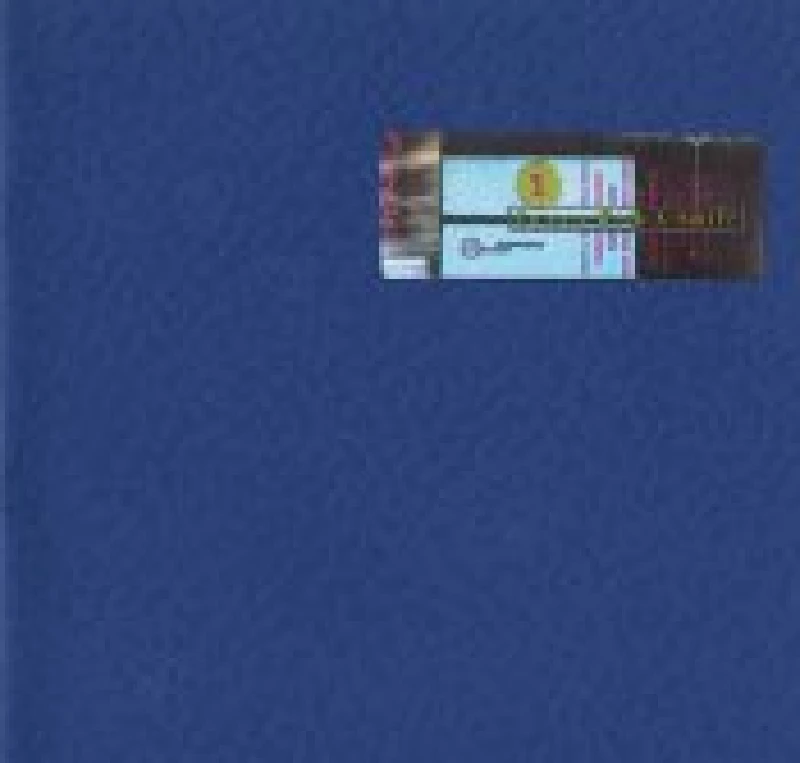
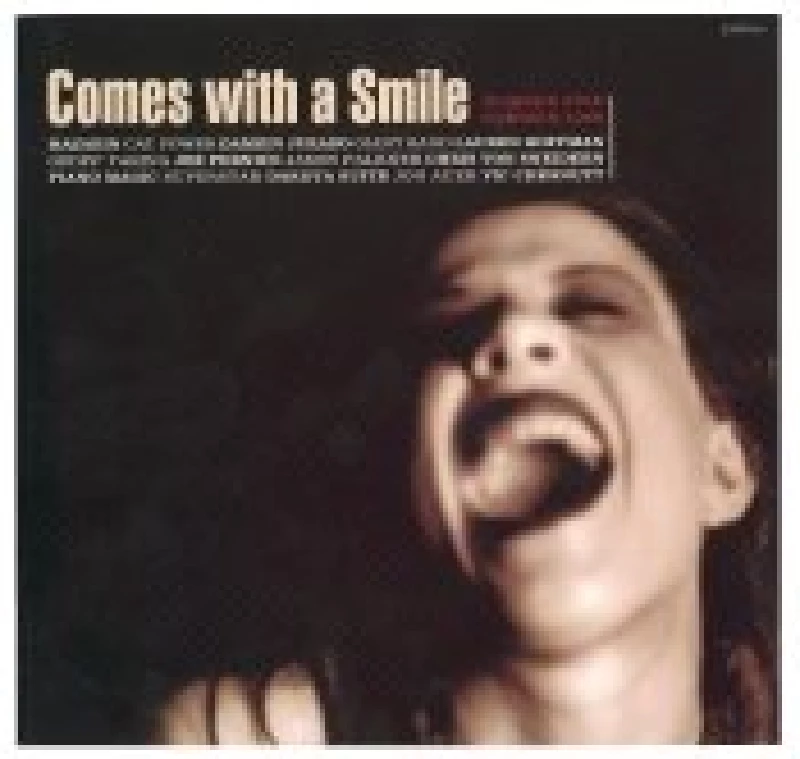
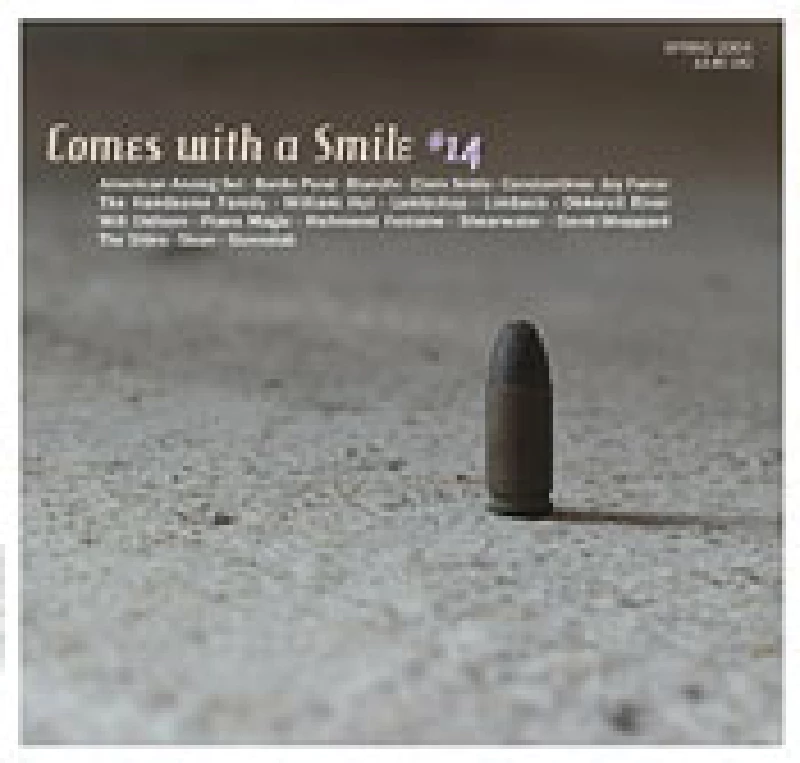
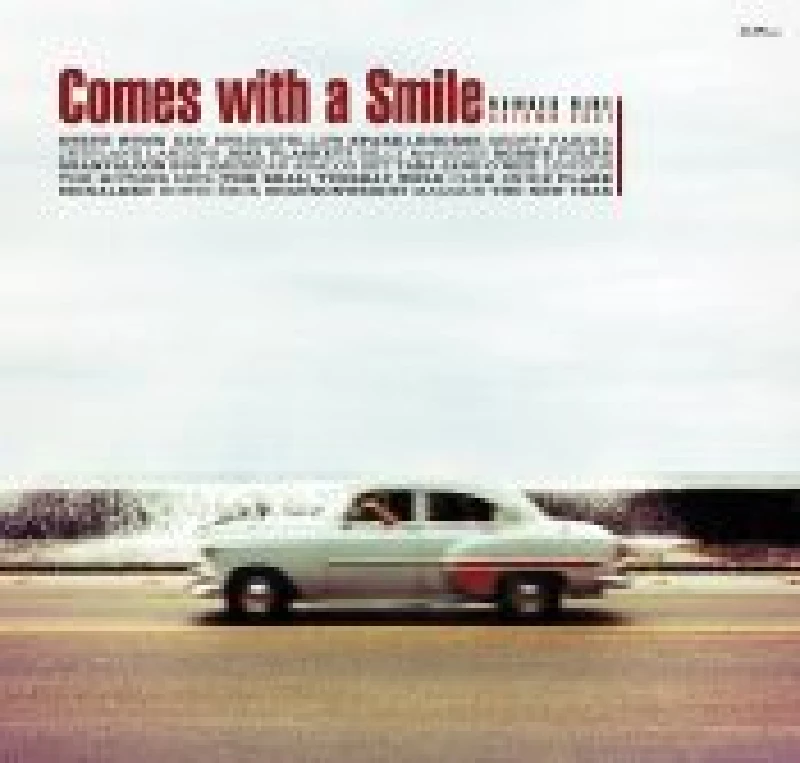
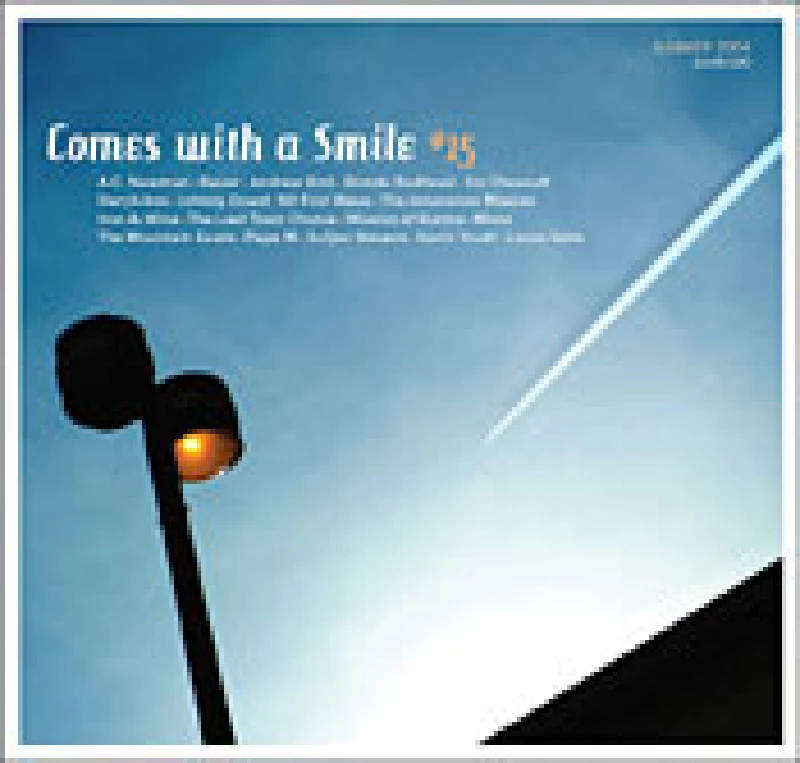
most viewed articles
current edition
Shrag - Huw Stephens Session 08.12.10 and Marc Riley Session 21.03.12Gary Numan - Berserker
Razorlight - Photoscapes
John Hassall - Photoscapes
Max Bianco and the BlueHearts - Troubadour, London, 29/3/2025
Primal Scream - Photoscapes
Roberta Flack - 1937 - 2025
Waeve - Club Academy, Manchester, 18/3/2025
previous editions
Heavenly - P.U.N.K. Girl EPManic Street Preachers - (Gig of a Lifetime) Millennium Stadium, Cardiff, December 1999
Boomtown Rats - Ten Songs That Made Me Love....
Beautiful South - Ten Songs That Made Me Love...
Barrie Barlow - Interview
Oasis - Oasis, Earl's Court, London, 1995
Trudie Myerscough-Harris - Interview
Dwina Gibb - Interview
Pixies - Ten Songs That Made Me Love...
Doris Brendel - Interview
most viewed reviews
Pennyblackmusic Regular Contributors
Adrian Janes
Amanda J. Window
Andrew Twambley
Anthony Dhanendran
Benjamin Howarth
Cila Warncke
Daniel Cressey
Darren Aston
Dastardly
Dave Goodwin
Denzil Watson
Dominic B. Simpson
Eoghan Lyng
Fiona Hutchings
Harry Sherriff
Helen Tipping
Jamie Rowland
John Clarkson
Julie Cruickshank
Kimberly Bright
Lisa Torem
Maarten Schiethart